NVLAP Sound Absorption NRC – C423 Partition Testing
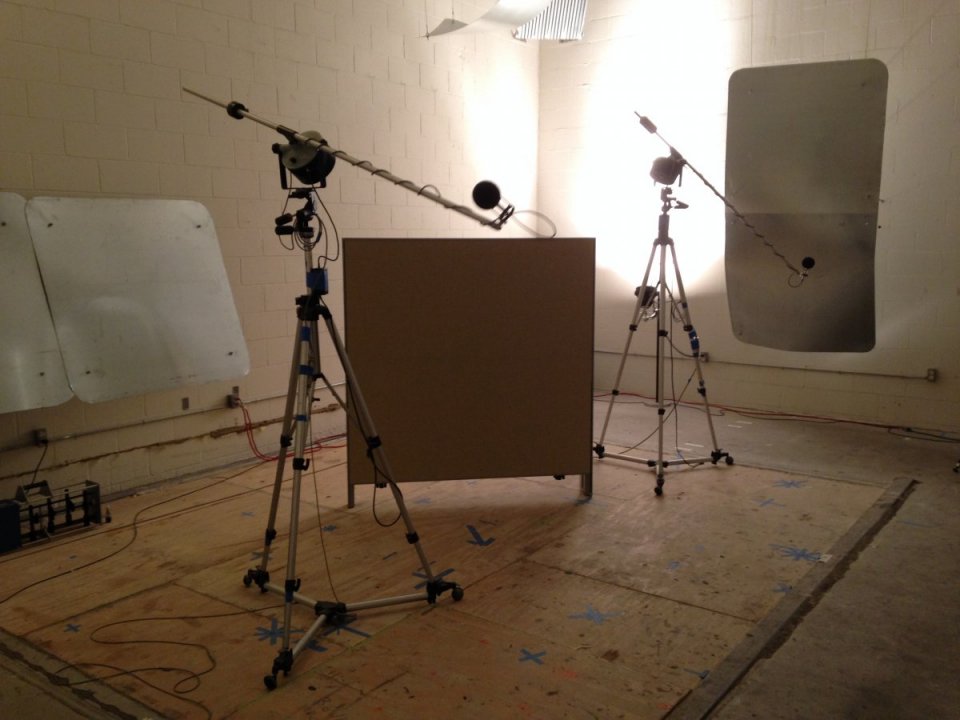
Theory and Practice. In the early 1970’s, we began to treat measurement of products as a minimum requirement of a design process, and as computer modeling tools became available, these were also quickly incorporated in our consulting work. Without both of these measurements, we cannot predict success in design efforts.
With the construction of a major NVLAP Accredited Acoustic Laboratory (Lab Code 200248) and the acquisition of millions of dollars in advanced measurement systems for acoustics and our other fields,, we now have over two decades of experience in laboratory product measurement. This measurement experience has taught us the value of measurement as well as it has built up a deep intuitional knowledge of how each area of product performance works, as we have measured many successes and many failures in our lab before the failure becomes institutionalized into a problem product.
Under formal accredited measurement, we measure sound power, sound transmission, vibration transmission and sound absorption. There is confusion in the field about each of these measures, so this introduction may help. Sound power is the total sound emitted by a product normalized back to the product itself, rather than the environment, in a lab setting. Sound transmission is a measurement of fully enclosed barriers, such as walls and floors, where the only way the sound signal can pass is through the test sample in a lab setting. Vibration transmission is similarly a test of a fully enclosed barrier for vibration transmission in a lab setting. Sound absorption is a measurement of materials placed in the reverberation chamber, with regard to how they will impact reverberation in that lab chamber.
A few cautions should follow. Barriers (STC) do not absorb much sound, and absorbers (NRC) do not stop much sound. They are used for different reasons. Barriers keep sound in or out of an enclosure, absorbers reduce reverberation within an enclosure but do not stop sound from leaving that enclosure.
Neither barriers nor absorbers have an easily predictable benefit in the open plan office environment. These are fundamental issues that are not well understood by the public. In the product field, most clients who who want to understand the localized performance of their product will need testing in an anechoic chamber rather than a reverberation chamber. Most clients who simply need ratings, but don't have a need to understand localized product performance, will need testing in a reverberation chamber suite.
NVLAP Sound Absorption NRC – C423 Ceiling Testing
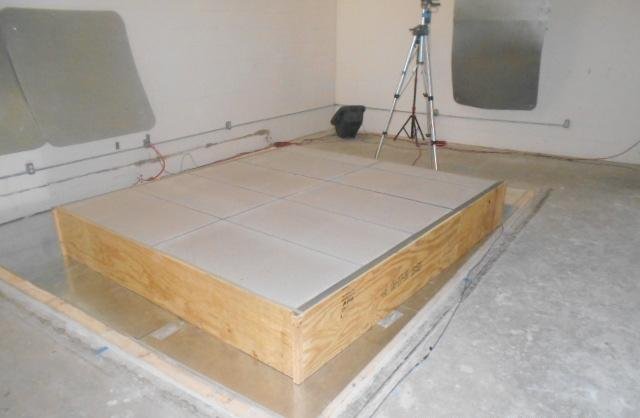
Laboratories.
In our Acoustical Laboratory, we have four major measurement laboratories:
- The Anechoic Chamber
- The Reverberation Test Suite
- A Source Room (90m3)
- A Receiving Room (233m3)
- A Floor Chamber (51 m3)
In these Laboratories, we can measure to ASTM, ISO and other standards, the 4 main measurement standards for:
- Sound Power and Sound Pressure Level (SP) - Anechoic or Diffuse
- Sound Transmission Class (STC) - Diffuse
- Impact Insulation Class (IIC) - Diffuse
- Sound Absorption (NRC) – Diffuse
We can also perform many kinds of non-standardized testing in any of our laboratories.
Our Laboratories are equipped with one of the first automated testing systems in the United States, the Norsonic 850 Multi-Channel Analyzer. This analyzer is used for all standardized lab testing, and it includes standards for the United States, Europe, and Great Britain. We also have the first Acoustic Camera in consulting lab use in the U.S., the Norsonic 848A, which can be used for source localization studies that could only previously be done via acoustic intensity measurement (which we also provide).
NVLAP Sound Power Testing – ISO3745 CPAP (Sleep Apnea)
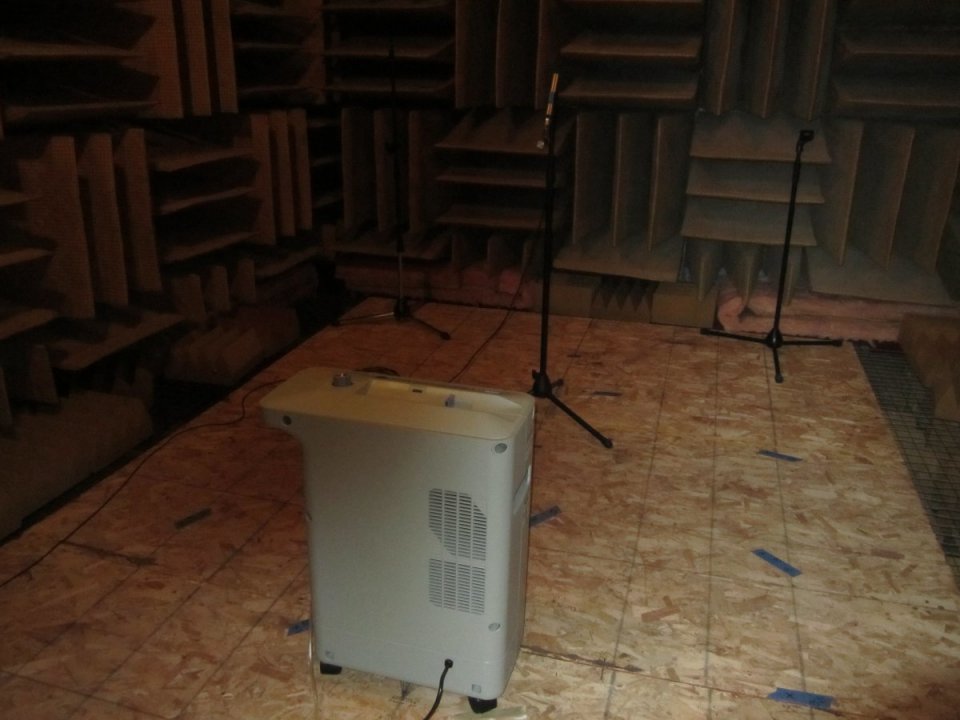
Summary. Our Acoustical Labs were designed for acoustic research and testing, and we are one of the only accredited labs in the U.S. with a strong acoustical research mission. We also have the only NVLAP (Lab Code 200248) Accredited anechoic chamber in the U.S in a public lab., which received Guinness World Record awards in 2005 and 2013 for being the “Quietest Place on Earth”.
This testing was focused on a sleep apnea system to support proper breathing at night, without the product becoming a source of annoyance to the sleeper or his/her partner.
NVLAP Absorption Testing ASTM C-423 Dual Microphone
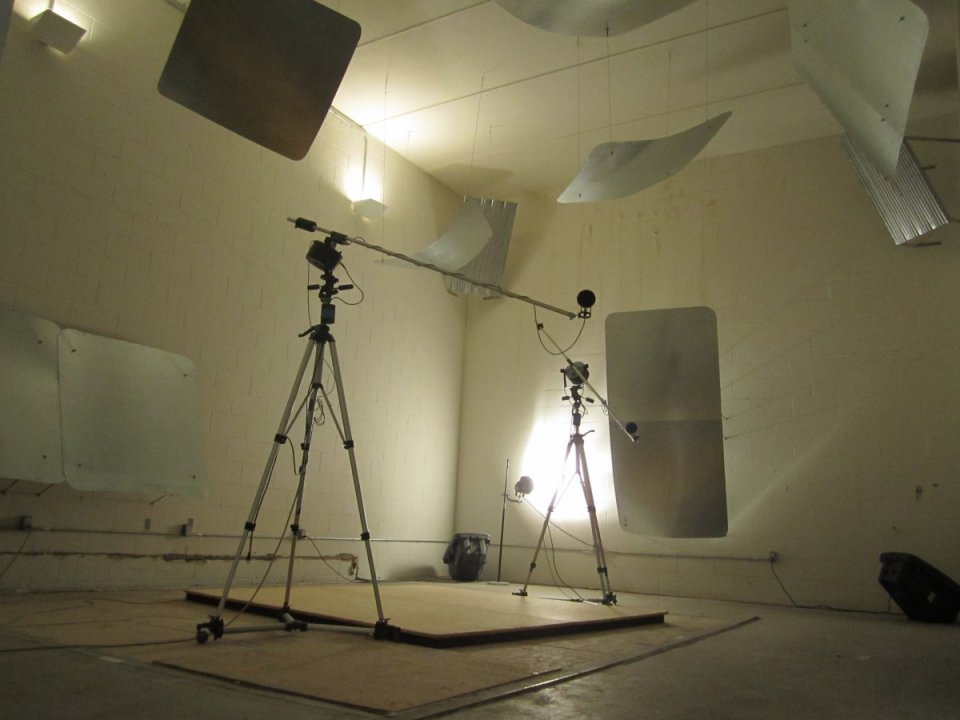
Acoustic Laboratory Dimensions.
| Receiver Reverberation Chamber | (L X W X H) 27’ x 19’ x 16’ | [8.2m x 5.8m x 4.9m] |
| Source Reverberation Chamber | (L X W X H) 19’ x 11’ x 14’ | [5.8m x 3.5m x 4.4m] |
| Floor Reverberation Chamber | (L X W X H) 18’ x 12’ x 8’ | [5.4m x 3.8m x 2.5m] |
| STC Wall Opening | (W x H) 8'-ó” x 8’-ó” | [2.5m x 2.5m] |
| STC/IIC Floor Opening | (L x W) 14’-5” x 12'-7” |
[4.4m x 3.9m] |
Anechoic Chamber I (Full Anechoic or Hemi) 12’ x 10’ x 8'-6” clear space wedge tip to tip, 7’-4” clear H
NVLAP (Lab Code 200248) Sound Absorption ASTM E1050-12 Impedance Tube Testing
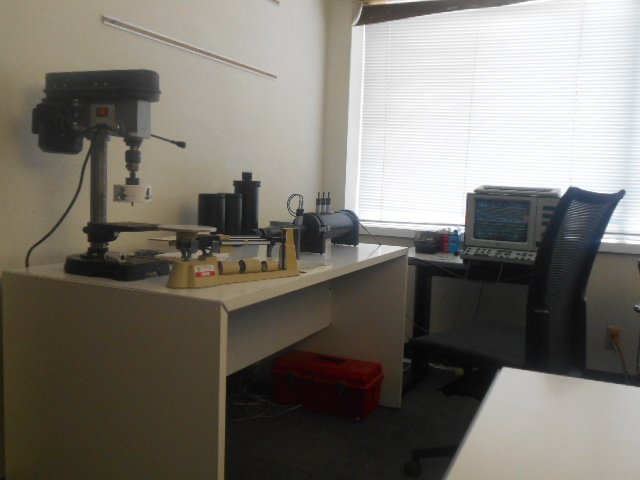
Accredited Test Standards for Our Acoustical Laboratory.
ASTM E90: Laboratory Measurement of Airborne Sound Transmission Loss of Building Partitions Frequency Range:80 to 5000 Hz
ASTM E492: Laboratory Measurement of Impact Sound Transmission through Floor-Ceiling Assemblies Using the Tapping Machine
ISO 3744: Determination of Sound Power Levels of Noise Sources – Engineering Methods for Free Field Conditions Over a Reflecting Plane.
ISO 3745: Determination of Sound Power Levels of Noise Sources – Precision Methods for Anechoic and Semi- Anechoic Rooms.
ASTM E336: Measurements of Airborne Sound Insulation in Buildings
ASTM E1007: Field Measurement of Tapping Machine Impact Sound Transmission through Floor-Ceiling Assemblies and Associated Support Structures
ASTM E966: Guide for Field Measurement of Airborne Sound Insulation in Building Facades and Façade Elements
ISO 3741: Determination of Sound Power Levels of Noise Sources – Precision Methods for Broad-Band Sources in Reverberation Rooms
ANSI S12.51: Determination of Sound Power Levels of Noise Sources Using Sound Pressure – Precision Method for Reverberation Rooms
ANSI S12.54: Determination of sound power levels and sound energy levels of noise sources using sound pressure – Engineering methods for an essentially free field over a reflecting plane)
ANSI S12.55: Precision Methods for Determination of Sound Power Levels of Noise Sources in Anechoic and Hemi-Anechoic Rooms
ASTM C423-09 Sound Absorption and Sound Absorption Coefficients by the Reverberation Room Method.
Custom Acoustic Product Testing
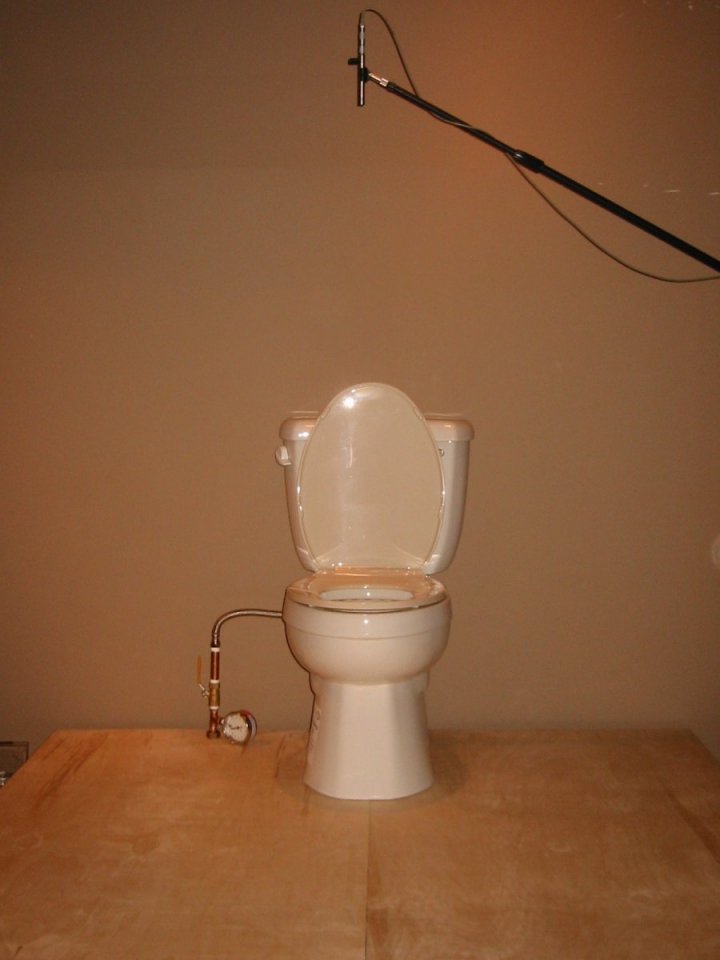
Additional R & D Laboratories.
STUDIO 1 AUDITORIUM & LAB
This studio lab is used for subjective research, conferences and recording.
STUDIO 2 ACOUSTIC LAB AND STUDIO
This studio lab is used for acoustic research, open plan research and recording.
ACOUSTIC SIMULATION LAB ANECHOIC CHAMBER II
This lab is designed to create controllable sound fields for testing of acoustic products in situ. It is also used as a Hemi-Anechoic chamber for standardized testing.
LIGHTING AND HUMAN FACTORS LAB
This lab is designed for photometric testing, color testing, and human factors evaluations.
VISUAL PERFORMANCE LAB
This lab is used to test visual performance in work tasks or other tasks, with fully controllable glare, illuminance, luminance and sample viewing angle.
OPEN PLAN OFFICE LAB
This lab is used to test and demonstrate acoustical, audio-visual and lighting applications in the open plan office, including background noise, speech babble, HVAC noise, environmental noise and electronic sound masking.
VISUAL SIMULATION LAB
This lab is used to demonstrate visual performance under a series of programmable lighting settings of room lighting and portable plug-in lighting.
LIGHTING PROTOTYPING LAB
This lab is used for full-scale prototyping of lighting systems, and it was originally designed for automotive lighting research.
Acoustic Simulation Lab - Hemi Anechoic Chamber
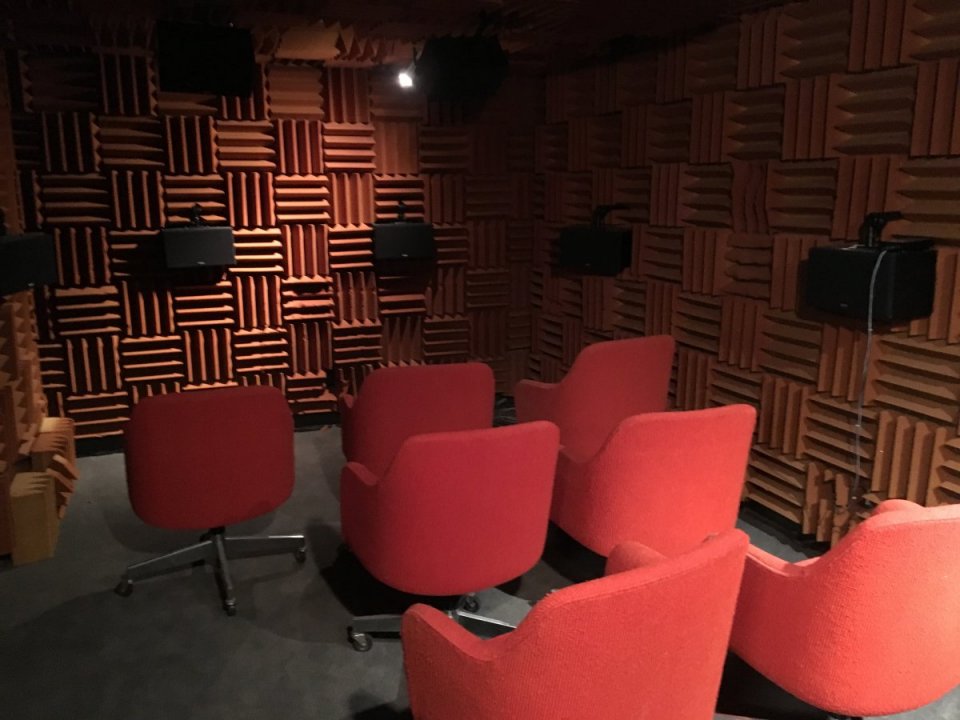
ACOUSTIC SIMULATION LAB - ANECHOIC CHAMBER II
This lab is designed to create controllable sound fields for testing of acoustic products in situ. It is also used as a Hemi-Anechoic chamber for standardized testing. The ASL was designed in 1991 for Yamaha Pro-Audio when there were no acoustic simulation software systems worldwide. Yamaha wanted to set up a demonstration in New York City to simulate various international concert environments in which pianists could try Yamaha's concert Piano's. Yamaha's Japanese engineers had worked on this problem for some time in Japan before turning it over to Orfield Labs.